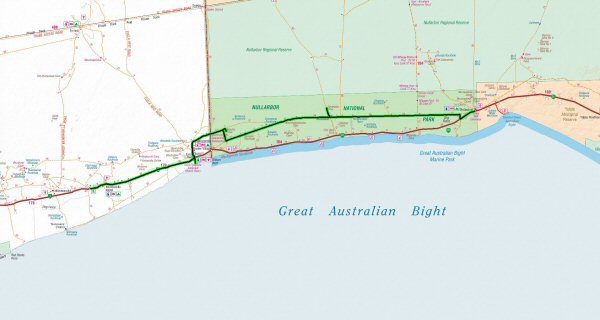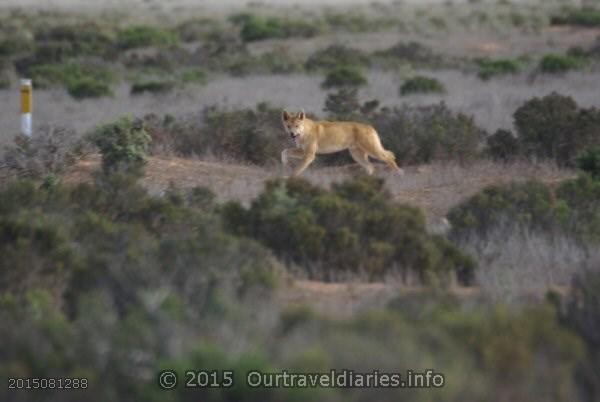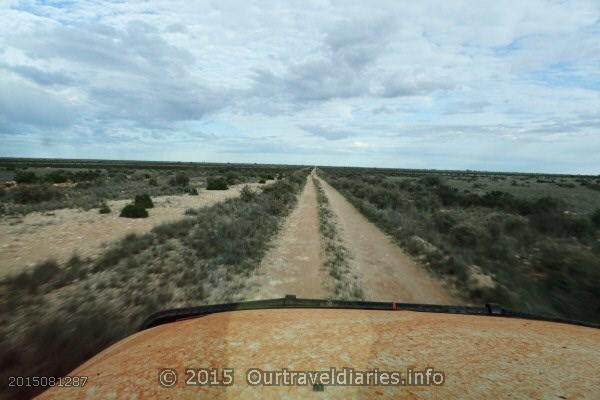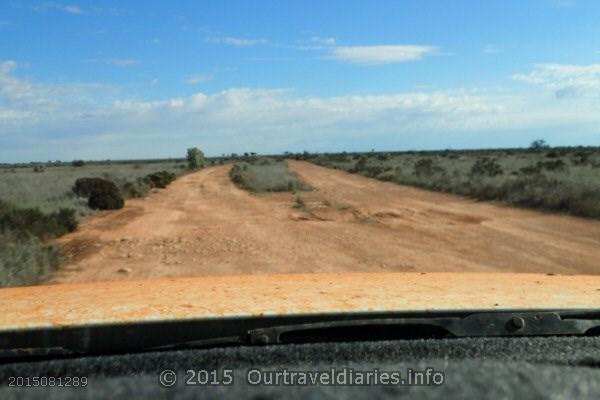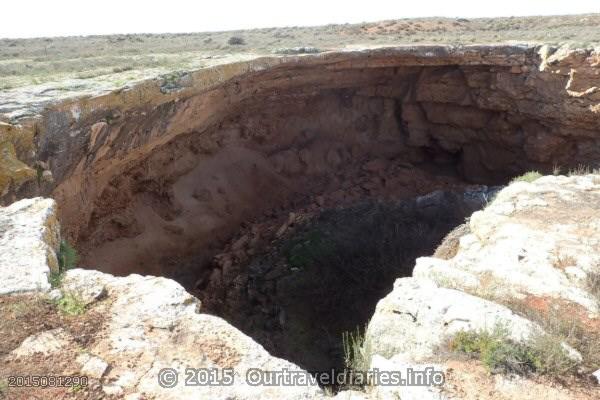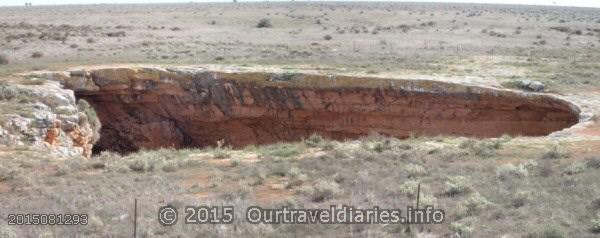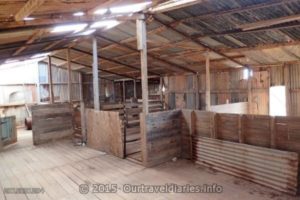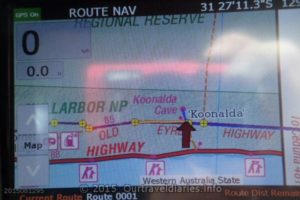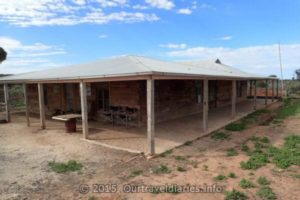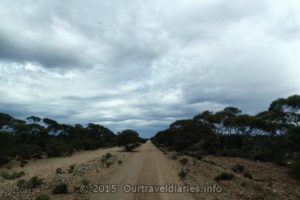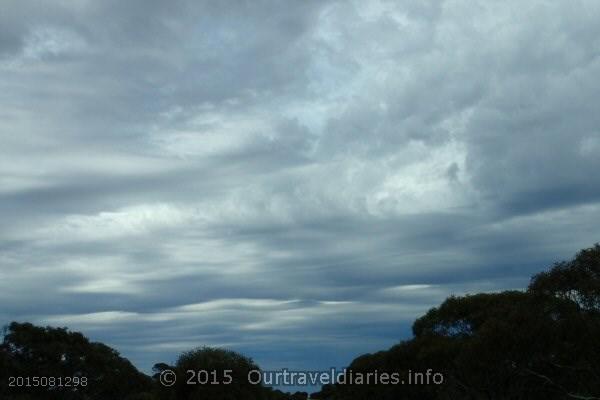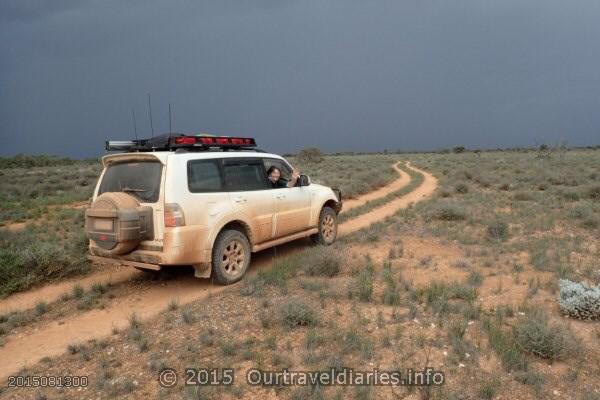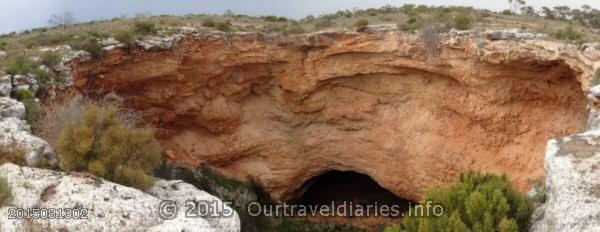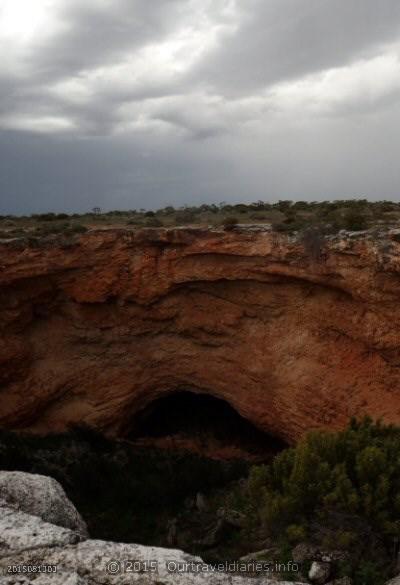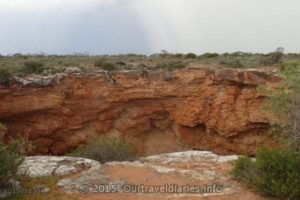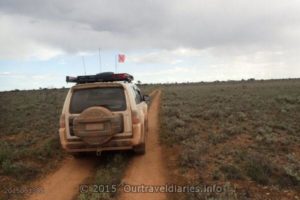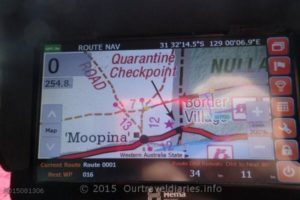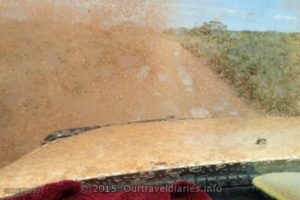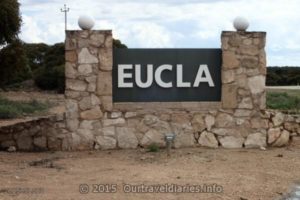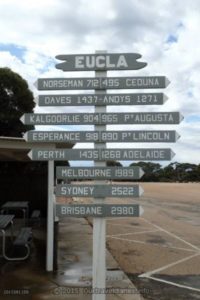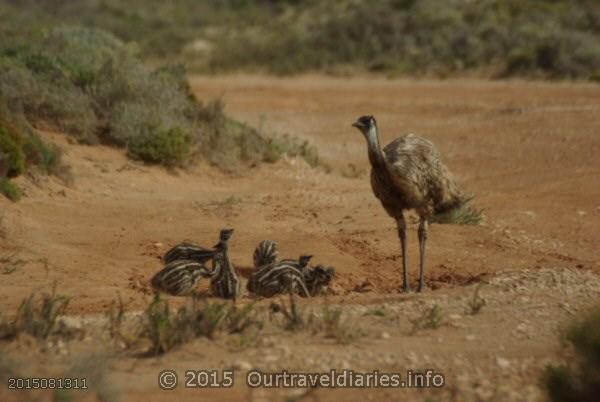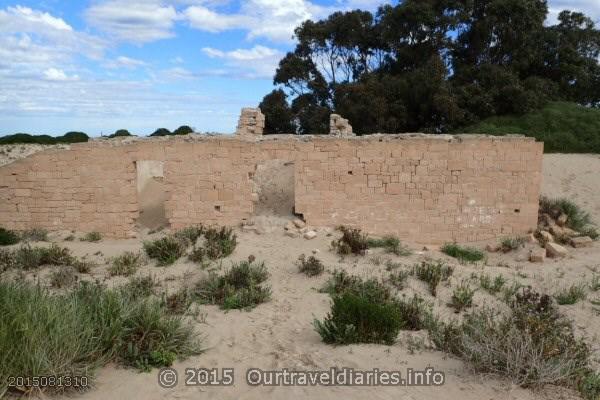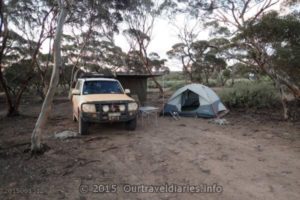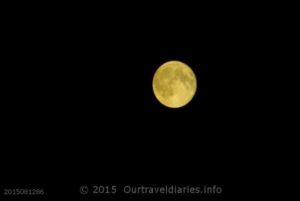Day 17 - Nullarbor to Mundrabilla Rest Area
Sun 30 Aug 2015
After leaving the Nullarbor Roadhouse we headed along the Old Eyre Highway where we saw a couple of dingos out for an early morning run. Dingos are solitary dogs and it’s rare to see them run as a pack in the wild although if hunting large game they’ve been known to form a pack for a common goal. The couple we saw were about 5kms apart and each one seemed quite playful and curious.
- A curious Dingo (yellow dog), along the Old Eyre Highway
- The Old Coach Road north of the old Eyre Hwy, SA
- On the way to Koonalda Cave, South Australia
Arriving at Koonalda Cave we noticed it is fenced off; it is an Aboriginal Art and Archaeological site and also for safety reasons, the cave opening is unstable and there is a risk of falling. A permit is required to access the actual cave. In the 1960’s and 70’s Koonalda Cave was explored and found to have evidence of Aboriginal rock art on the walls dating back to approx 20000yrs. It’s said the cave was used by the Aboriginals to mine flint although there wasn’t evidence they actually inhabited the cave.
- Looking down Koonalda Cave, WA
- Panorama view of Koonalda Cave, South Australia
- The fence around Koonalda Cave, South Australia
Back at Koonalda Homestead there were some other travellers enjoying a cuppa on the verandah. One thing I miss about modern home styles is the wide verandahs of the older Australian homes. Koonalda Homestead was still operating as a station up until 1989 when it became part of the Nullarbor National Park. If you’re out this way it’s worth a look, the shearing shed still has some tools and equipment in it. If you’re a car historian or looking for a spare part you might find what you’re looking at Koonalda Homestead. From Holden EK’s, Valiant AP5, Mini Cooper, the list goes on. Back in the 60’s when the original Nullarbor was only bulldust and potholes Koonalda was one of the fuel stops. Standing as a reminder of the historical role Koonalda played supplying petrol you will find an old Shell petrol bowser outside Koonalda Homestead.
- The disused shearing shed at the Koonalda Homestead, South Australia
- Yup we are here at Koonalda, WA
- The restored Koonalda Homestead, South Australia
- The Old Coach Road, Western Australia.
About 100kms west of Koonalda and still travelling along the Old Eyre Highway you’ll find Warbla Cave. Around the 43km mark there is a track off to the right, about 55kms further on is Warbla Cave. Along the way we had some rain and the by the time we reached Warbla Cave a full on thunderstorm with lightning greeted us. Unlike Koonalda Cave, Warbla Cave isn’t fenced off but care still needs to be taken .
- Storm clouds gathering on the Old Eyre Highway, SA
- On the track with a Storm coming near Warbla Cave North of the Old Eyre Highway, SA.
- Approaching Warbla Cave by foot , South of the Old Coach Road, South Australia
- Looking down into Warbla Cave, South Australia
- There’s no fence around Warbla Cave
- Old Coach Road, South Australia.
The last 50 odd kms of the old Eyre Highway to Eucla were slow. Even though the rain only created small puddles along the old Eyre Highway it became a little muddy and slippery. We saw a couple of wedge tailed eagles and stopped for some photos but the overcast conditions didn’t help. After topping up the car and our tummies at Eucla (the two go hand in hand) we headed for the Old Telegraph Station; our last visit was in 1998. Pulling in to the parking area for the Telegraph Station another male emu and chicks were having a drink from the puddles.
- Arrived at the Western Australia/South Australia Boder
- Got a bit wet, on the Old Coach Road, Western Australia.
- Weclome to Eucla, Western Australia
- 1435 kms form Eucla to home.
- Dad Emu looking after his chicks, Eucla, WA.
Seeing and walking around the old telegraph station provided mixed feelings. On the one hand it’s exciting and interesting to share in history while on the other hand it’s sad to know that at some point it may all be lost to the sands of time. In 1877 the telegraph line and repeater station were set up at Eucla. This innovation revolutionized communications between Western Australia and the East Coast.
Eucla became a thriving town but in the 1890’s the town relocated a little further north. The telegraph station remained however by 1927 it had closed. Loss of sand dune vegetation due to a rabbit plague resulted in sand drifts which continue to claim the telegraph station. The only negative to the experience of visiting history as with most historical ruins is all the “graffiti” sprayed and etched on the walls.
- The old Eucla Telegraph Station near the coast, WA.
We pulled into a rest area west of Mundrabilla and made camp, as night approached we were treated to a brilliant moonrise.
- 24 Hour rest area just of the Eyre Hwy, near Mundrabill, WA.
- Full moon, Eyre Hwy, near Mundrabill, WA.
Visits: 3969

